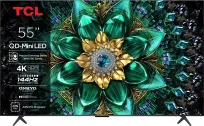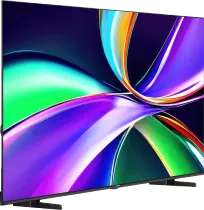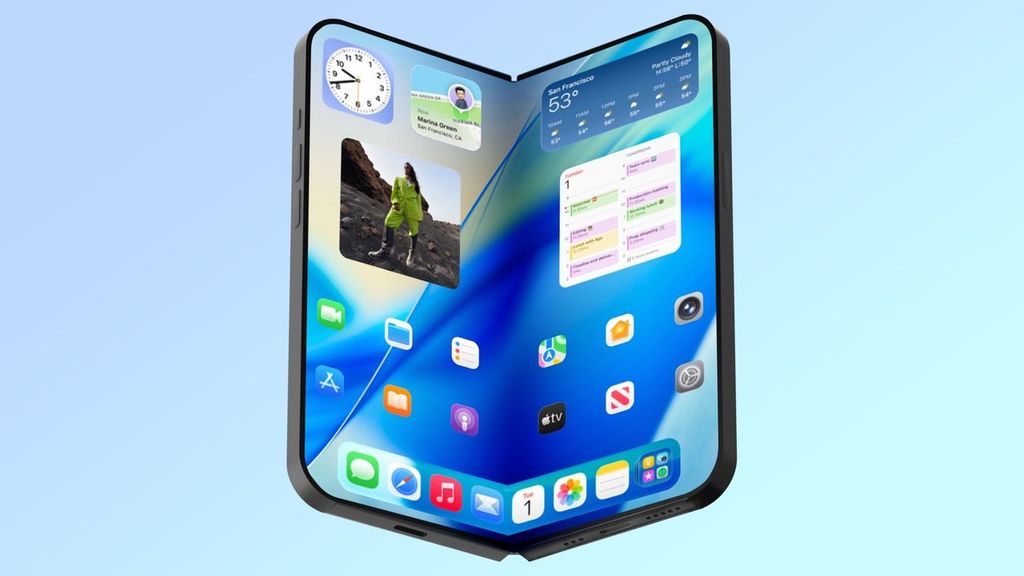
The latest flagship from LG is starting to appear in the first independent tests. The LG G5 model, which continues the popular OLED series from the "Gallery" line, has been scrutinised by the editorial team at RTINGS.com. How does the latest premium representative fare in 2025? Let's analyse the test results from the Canadians together!
Black and Contrast of OLED G5
As is the case with OLEDs, the black in the LG G5 is simply... perfect. As with every organic matrix, each pixel lights up (or doesn’t light up) independently, so where there is supposed to be black, there is literally a lack of light. The effect of this is that the contrast is virtually infinite, just like in its predecessor, the G4 model.
The brightness of G5 is groundbreaking...but...
HDR Brightness
Although we have already got our proverbial hands on the G5 (our measurement results are shared below), the tests published by the Canadian portal RTINGS confirm what LG Display boasted about during the launch of the new tandem RGB panels. In short, we are dealing with a true breakthrough when it comes to image brightness in OLED televisions. Just like in our lab, their tests also showed that the G5 is capable of achieving peak brightness of around 2500 nits in a 10% window. This is a value that has so far been reserved only for top models with Mini LED backlighting. Until recently, such a thing was merely a dream for OLED.
Moreover, the brightness of the whites on the full, 100% screen rivals the new QD-OLED panels from Samsung Display, which can be found in models such as the S95F and (most likely) the new Sony Bravia 8 II.
So where is the "but"...?
However, there is no rose without thorns. RTINGS points out a rather concerning issue with displaying content in HDR10 format. In some scenes – particularly the darker ones – the G5 can significantly spoil tonal transitions. Instead of smooth gradients, strange bands and contours appear, which not only disrupt immersion but also deviate from the director's intent. As the Canadians put it:
“HDR10 has unusual contouring in dark scenes that makes the image look ugly.”
Fortunately, Dolby Vision, which is a format with dynamic metadata, does not exhibit these problems, so if you are using streaming platforms, you probably have nothing to worry about. However, with classic HDR10 – for example, from a player or HGiG signal, such as on the PS5 or XBOX Series X/S, it is worth keeping an eye on this topic because content may look worse than on its predecessor...
However, there is a good chance that the problem will be resolved with a software update, but at the time of writing this text – it is what it is. It's a shame, as in other aspects the LG G5 has made significant progress – for instance, the coverage of the wide colour gamut BT.2020 exceeds 82%!.
One more thing... viewing angles
Unfortunately, there is one more thing that we believe deserves attention – a deterioration in viewing angles compared to last year's G4 model. Our suspicions have been confirmed: after removing the MLA micro-lenses that were present in the G4, the LG G5 has lost some image visibility when viewing from the side. Don't get us wrong – the viewing angles are still very good, as is typical for OLED. But in direct comparison to Samsung or Sony's QD-OLEDs, and even the G4, the differences are clearly visible. This may seem like a minor point, but in the context of a flagship – it is also a kind of "downgrade" that is worth being aware of.
To illustrate the difference, we are placing two YouTube videos where you can see how the viewing angles look on the LG OLED TV with MLA micro-lenses and in the model with a classic WOLED panel.
WOLED MLA Television
WOLED TV
Gamers, get your pads ready – LG G5 is a gaming beast
Like its predecessor, the LG G5 is an OLED designed with gamers in mind. But this time, the Koreans have added something extra: a refresh rate up to 165 Hz. Sounds impressive? Indeed, though it should be noted that such a bonus will mainly benefit a very narrow group of PC gamers. For console players, nothing changes – Xbox or PlayStation are still limited to 120 Hz. Fortunately, the input lag remains very low, regardless of resolution or format – below 10 ms in most scenarios. RTINGS recorded some anomalies at 165 Hz (input lag increases slightly), but for the typical user, this is more of a curiosity than a real problem. Onboard, we find everything we expect from a premium OLED: Dolby Vision support in game mode, HGiG mode, automatic game mode (ALLM) and variable refresh rate (VRR) – all through 4 HDMI 2.1 ports with full bandwidth of 48Gb/s.
The biggest novelty? The LG G5 supports cloud gaming through Xbox Game Pass right out of the box. Everything works without having to connect a console – all you need is a subscription account and a Bluetooth controller. Although this feature is also being added to the G4 and older models, it will only be available after a software update. Here, we have it ready from the start.
Remote – minimalism, minimalism, minimalism...
Another noticeable change in the LG G5 is the new remote. It has been significantly minimised and... strongly resembles the one found in Samsung TVs. The numerical buttons have been removed, which we can somewhat understand – more and more people today use apps and VOD platforms. But there’s one decision that is really hard for us to defend.
The “Exit” button has disappeared from the remote, which allowed users to switch between sources with a single click – e.g. HDMI 1, HDMI 2 or terrestrial television. This is one of the most frequently used buttons in everyday use, especially for those using multiple devices connected to the TV. Admittedly, it can still all be done through the on-screen menu, but it takes more time and is simply less convenient. We understand the desire to simplify the design, but adding one small button really wouldn't hurt anyone.
Fortunately, LG has not given up one of the most distinctive features of its remote – gyro control. We can still control the cursor on the screen by moving our wrist, as if we were holding a magic wand. And it must be admitted that it still makes a great impression and makes operating the TV quick, intuitive and... simply enjoyable.
Sound – an elegant form, surprisingly good sound
Similar to its predecessor, the LG G5, despite its very slim and elegant design, offers truly solid sound experiences. The television tries to reproduce space and even a slightly perceptible bass. Unfortunately, once again, there is an element that may concern home cinema fans – the lack of support for DTS sound. LG has abandoned support for this format. In practice, this means that if we want to watch Blu-ray movies with the original DTS sound, we have to reckon with certain limitations. Of course, it can be circumvented – simply connect a player or console directly to a soundbar or amplifier that supports DTS and transmits the image on to the television. But this complicates the entire setup.
Breakthrough, but not without compromises.
LG G5 is undoubtedly a groundbreaking television. Impressive brightness, refresh rates of up to 165 Hz, and an entirely new tandem OLED panel – all of this means that in terms of technology, the G5 takes a huge leap forward. In many respects, it clearly surpasses its predecessor, especially regarding HDR effects and gaming capabilities.
However – and this is an important "however" – there are also elements in which the G5 performs worse. Deterioration of viewing angles due to the absence of micro-lenses, lack of support for DTS:X audio, and problems with tonal transitions in HDR10 are not just minor nuances – they are real differences that are worth considering when making a purchase. Sure, many of these shortcomings – like the aforementioned artifacts in HDR10 – could be improved in updates, but for now, they are simply present. Therefore, before you rush into buying the latest model, it’s worth asking yourself: do you really need such brightness? Or perhaps better viewing angles, full support for DTS:X audio, or simply a lower price will be more important? The G4 model, which still offers excellent image quality and a full set of features, is now available at very attractive prices. We encourage you to also check out our review of the LG G4 – perhaps last year's flagship will turn out to be the best choice for your living room.
In conclusion, we can compare the LG G5 to a rose – the groundbreaking display is the flower that truly shines, but in full light, you can also see the thorns that might prompt one to reach for last year's model.
Source: Rtings.com
PS. We are still waiting for the first test samples to carry out our test for you!
 Maciej Koper
Maciej Koper













